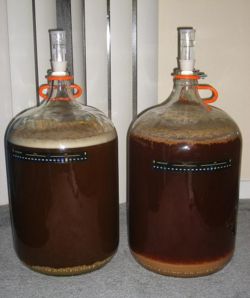
Brewing beer begins with extracting the fermentables from a starch source (generally barley but some beers are made from wheat, rice or other grains), by steeping the grain similar to steeping tea. The temperature needs to be controlled while steeping, and kept under boiling so the fermentables are kept intact. When the fermentables (sugars, starches, etc) are completely extracted, the liquid containing the fermentables is boiled to make sure there is no contamination. Hops are used to add a bitterness flavor to the beer, while preserving it as well. After the the fluid is cooled to a reasonable temperature, the yeast can be pitched into the liquid containing the fermentables. The yeast then consumes the sugars and starches, excretes alcohol (also a preservative) and respirates carbon dioxide (carbonating the beer).
Brewing beer is an art of sorts, which depends solely on your own taste. If you enjoy a bitter beer, adding hops with a high alpha acid at the bittering stage will increase the bitterness, and if you do not like a bitter beer, using a lower alpha acid hops will make a less bitter beer. There is no end to the combinations of ingredients to make a respectable and enjoyable home-brew.